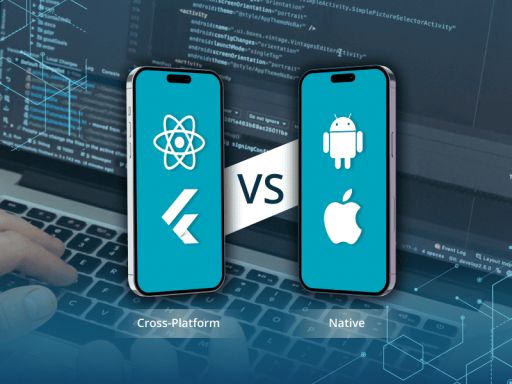The mobile gaming industry is experiencing exponential growth, and revenues from mobile game development alone are expected to reach above $100 billion annually by 2028.
Therefore, this all-inclusive guide will take you through the complex process of mobile game development, from conceptualization to final successful market launch. It is an indispensable guide for aspiring and professional developers alike.

The Foundation: Conceptualization and Pre-Production
The process of making a highly successful mobile game starts a long time before writing the first line of code and hiring a game developer. Conceptualization is important because it lays down the basis of the whole development process. It’s a stage where game developers and creative teams get together to transform abstract ideas into concrete concepts to develop into exciting gaming experiences.
The development process starts with idea generation backed by thorough market research. This research provides insights into current trends, player preferences, and emerging opportunities in the mobile gaming industry. Leading mobile game development companies recognize the importance of creativity, but they also understand that market viability is just as critical to a game’s success.
Market Research
In market research, developers find out about the competing games, study monetization success strategies, and find demographics for the target audience. All this helps refine an initial concept to ensure the final product resonates with its intended audience. Further, market research also requires the study of platform-specific requirements, which may develop a game differently for Android compared to iOS.
Game Design Document Development
Once the core concept is established, the next step is to create a complete game design document. The GDD acts as a living blueprint that will drive the entire development process and outlines everything from gameplay mechanics and feature sets to technical specifications and monetization strategies.
A good GDD would include:
Gameplay mechanics and rules in detailed descriptions
- Character designs and storylines
- Level progression systems
- Technical requirements and constraints
- Monetization strategy and business model
- Art style guide, visual references
- Sound design specs
- Requirements for target platforms

Production Phase: Bringing the vision to life
In the full production phase, the development team really starts creating the actual game. In the production phase coordination of many persons and departments is required in order to maintain the quality of the game.
Technical Architecture and Development Environment Setup
First of all, the technical team must establish a mobile game development environment by selecting all the appropriate tools and technologies since this is critical since it affects the entire process of development as well as the performance of the final game. The two game engines that are currently being popularly used with great frameworks for mobile games are Unity and Unreal Engine; however, some use their own self-created solutions for individual needs.
Art Asset Creation and Implementation
The art team creates visual assets based on the approved art style guide. These assets include character models and animations, environment designs, user interface elements, special effects, and marketing materials.
Modern mobile games demand excellent assets, which remain highly aesthetic in nature while remaining optimized to perform according to the needs of the mobile device. Artists balance aesthetic quality and performance factors to avoid loading assets into devices.
Core Gameplay Development Programmers actually start to implement the core gameplay mechanics described in GDD. This will usually involve the following components: basic game systems, mechanics, player controls and interactions systems, game logic and rules, physics systems if needed, and achievement and progression systems, among other things.
The developing team would then normally pass through these in an iterative manner: implement, test, refactor, and repeat them based on the findings, internal feedback, and results from the testing.
Backend Infrastructure Development
Most modern mobile games require powerful backend systems with various features including:
- Player authentication and profile management
- Leaderboards and social features
- Cloud saves and progression tracking
- In-app purchases and virtual economies
- Analytics and tracking systems

Testing and Quality Assurance in Mobile Game Development
Testing and quality assurance are critical phases that often determine whether a mobile game succeeds or fails in today’s competitive market.
For professional game development companies and mobile game developers, quality assurance isn’t just a final check—it’s an essential part of the development lifecycle, starting early in the process and continuing well beyond launch.
Technical Testing: The Base of Stability
Technical testing is a quality assurance base for providers of Android game development services and game development companies. This is a critical stage where the game is strictly tested technically on various devices and operating system platforms.
Performance optimization mainly concerns frame rates, loading times, and overall game smoothness. Most elite mobile game developers use very advanced tools for analyzing memory usage so that the game runs without any sign of slowing down or crashing the device.
Analyzing battery consumption is a critical part of modern mobile game development, as players now expect an enjoyable experience without quickly draining their device’s battery.
Network connectivity testing ensures smooth gameplay, reliable multiplayer functionality, and seamless interaction with social features. Compatibility tests are also conducted across various screen sizes, resolutions, and hardware configurations to make sure the game performs properly on all supported devices.
Testing for playability: Fine-tuning the user experience
Good game developers recognize that technical excellence has to go hand in hand with excellent play, so good testing would focus more on the human element of playing—how playable and enjoyable the experience is for the players.
Game balance assessment is another important area of analysis, focusing on mechanics where challenges feel fair and rewards feel meaningful. Professional game development services often employ dedicated playability testers who evaluate the difficulty curve to ensure it remains engaging without becoming frustrating.
With players’ need to understand basic gameplay in just a few minutes, it has become increasingly important to evaluate the effectiveness of a tutorial in mobile game development. Testing of user interfaces is also very crucial so that controls are intuitive and responsive. The test for player progression verifies whether the advancement system of the game keeps the player interested over a longer period of time.
Beta Testing: Real-World Validation
Seasoned game developers usually conduct beta testing before releasing their mobile games. It is the phase where real-world conditions are tested, giving them valuable insights into how the game will perform. Beta testing is very useful for Android game development since it caters to a large number of devices in its ecosystem.
During beta testing, developers monitor real-world performance across various devices and environments to evaluate how the game holds up. Player engagement metrics help identify areas where interest might drop or frustration may occur. Basic monetization testing also takes place to assess the effectiveness of in-app purchases and ad placements. Since technical issues that don’t appear in controlled environments can emerge at this stage, this phase is crucial for final refinements before release.
The experience that game developers acquire in beta testing can mean a great deal to your final product. Professional game developers know how to solicit, analyze, and put into action the feedback acquired from beta testers. This is a critical area since they are always monitoring and paying close attention to user-experience concerns, such as control responsiveness, UI clarity, and overall game flow.
Professional video game developers of mobile games record problems, solutions, and improvements in great detail in the testing phase. In this way, at the time of launching, it is delivered to meet the expectations that modern mobile gamers have today. Often, a better investment in thorough testing helps distinguish between successful mobile games and those that just fail to make waves in this market.
Implementation of Monetization and Analytics
The war to build a game that will draw many is just half the battle in the current mobile game development arena. Successful mobile game developers and game development companies are aware that the right monetization strategies and strong analytics tools are essential for achieving commercial success. This phase requires a very fine line between revenue generation and player satisfaction.
Monetization Strategy Implementation: Balancing Revenue and Player Experience
Monetization strategy has become a key factor when hiring game developers. Experienced professionals tailor monetization methods to align with both business goals and player expectations. In most cases, in-app purchases form the core of mobile game revenue. These systems are thoughtfully designed using virtual goods, power-ups, or cosmetic upgrades that enhance gameplay without creating a pay-to-win experience.
Android game development services require finesse in integrating advertisements. The best game developers strategically place ads to maximize revenue without disturbing gameplay. This might be achieved through rewarded video ads, where in-game benefits are offered in return for watching voluntary ads, or carefully timed interstitial ads that appear at a natural break in the game.
Premium features and subscription models are among the advanced monetization strategies that professional game development services increasingly use. These may include exclusive content, additional gameplay elements, or limited-time events that are only accessible through a premium pass.
Season passes are relatively new in mobile game development and generate a steady income for the game while making sure that the players remain active for longer periods with constantly updated content and rewards.

Analytics Integration: Data-Driven Development
Today, mobile game developers rely very much on analytics to understand and improve the performance of their games. A strong analytics system is the eyes and ears of a game development company, providing crucial insight into how players interact with the game. It tracks behavior and preferences, helping the developer understand which features resonate with players and which may need improvement.
This is particularly critical in developing Android games because markets tend to behave differently for every monetization strategy which differs from each other. Analytics will perfect the fine-tuning in terms of price, offer, and promotions for maximum revenues without estranging the players. Retention metrics track players’ involvement to see periods where their attention begins to wane.
Analytics enables mobile game developers to optimize performance data gathered across different devices and usage patterns, while acquisition cost tracking lets them refine marketing strategies for profitable player acquisition campaigns. The best game developers now treat this as standard practice, informing decisions on everything from game design to marketing.

Pre-Launch Preparation and Marketing
Launch is a critical point in developing mobile games, and well-designed games can fail because of poor preparation and promotion. Game development services companies know that success requires a solid approach to both technical preparation and market positioning.
ASO: The Gateway to Success
Professional mobile game developers are aware that ASO is a significant factor in visibility in crowded app stores. Making a store listing appealing is not as simple as good graphics; strategic keyword optimization is also important for the game to show up in search results. The competition in the Google Play Store for Android game development is intense.
Screenshots and videos have to be done in such a way that they show the best features of the game, yet represent gameplay. The best game developers make assets that are visually appealing and will attract potential players but also set the right expectations. Localization for different markets goes beyond simple translation; it includes cultural adaptation of store listings and marketing materials.
Review and rating management has become an essential part of mobile game development, with early reviews playing a key role in building credibility. Game development companies actively encourage satisfied players to leave positive feedback, while addressing negative reviews quickly and professionally to maintain trust and improve user experience.
Development of marketing campaigns that create awareness and anticipation.
A comprehensive marketing strategy is always necessary for any successful mobile game launch. Social media presence helps in building community engagement even before the launch. This keeps people interested through regular updates and behind-the-scenes content. Influencer partnerships are also very important in mobile game marketing, especially since video game developers partner with content creators who can authentically showcase their games to relevant audiences.
The requirement for paid advertising campaigns means they must be ready and fine-tuned for the specific environment of each market and distribution channel. Press releases, media outreach, and more help create buzz throughout the gaming industry, so community-building initiatives form long-term engagement foundations. Bringing game developers with marketing chops on board can help connect all these different marketing bits into a cohesive strategy and maximize launch impact.
Launch and Post-Launch Support
The launch phase may be the final step in mobile game development, but experienced developers know it’s just the beginning of a game’s life. This crucial stage brings together technical execution, marketing efforts, and community management to ensure a strong release and drive long-term growth.
Soft Launch: The Strategic First Step
Professional game development houses normally consider soft launching – a strategy whereby they launch a game in some markets while waiting to release it everywhere else.
The soft-launching technique allows mobile game developers to test server infrastructure under real user activity without overwhelming it. During this phase, developers gather direct user feedback, often revealing issues that went unnoticed during in-house pre-testing.
The soft launch is very essential to the providers of Android game development services while trying to maximize monetization strategies throughout the markets. The leaders among game developers use this particular phase to perfect gameplay mechanics through actual player behavior, not assumptions. It’s becoming relatively standard in the process of mobile game development these days, especially for more complicated multiplayer features or in games with complex monetization systems.
Global Launch: The Main Event
The global launch is the culmination of game development services. Coordinated launches of a game through a chain of stores demand every aspect of timing in different regions and across platforms, then the marketing campaign activation for congruent availability. When you hire a game developer with experience and expertise at the time of launching will guide such a complex process.
Technical support preparation plays an important role at this point because teams are getting prepared to respond to every kind of problem that occurs. Server scaling management needs to be taken more seriously because sometimes, launches attract many more players than they had planned for. This means that the scale should be fast when developing a game but must remain stable.
Post-Launch Support and Updates: Sustaining Success
Professional mobile game developers know that a successful game launch is just the tip of the iceberg. There are constant content updates that keep players engaged and coming back to the game, fixes for bugs, and general optimizations for problems that occur when the game is extensively used. Post-launch community engagement becomes important, especially with the best game developers keeping an active dialogue going with their player base.
Event planning and execution keep the players interested for a long time as they provide new experiences with special events, tournaments, and seasonal content. Performance monitoring is an ongoing process because analytics help decide what updates and features to introduce in the future. Frequent updates help Android game development a lot because the widespread nature of the device ecosystem needs constant optimization and compatibility.
Conclusion: The Journey of Mobile Game Development
The lifecycle of mobile game development is complex yet very simple, yet rewarding in terms of a journey that continues long beyond the initial launch. This industry demands mastery of a wide range of disciplines, from technical development to marketing and community management. Whether employing a game development company or hiring game developers, comprehension of this all-encompassing lifecycle is necessary to create successful mobile games.
The best game developers and mobile game development service providers understand that every stage of the lifecycle contributes to a game’s success. Rigorous testing, quality assurance, effective monetization strategies, thoughtful launch preparation, and consistent post-launch support must all work together. When these elements are aligned, they create the foundation for a successful mobile game.
The mobile gaming industry is constantly evolving, and staying updated on the best practices for Android game development or any other platform is essential. The most successful games are those that continue to grow after a strong start by adapting to player feedback and changing market conditions. This approach to mobile game development blends technical excellence with strategic business planning and community engagement. These combined factors lay the foundation for long-term success in the highly competitive mobile gaming market.





